Decentralized finance (DeFi) commenced as one of the most remarkable platforms in the crypto ecosystem from the eminence of Blockchain. DeFi is a financial platform built with blockchain technology to modernize traditional finance, which can cultivate financial applications to a transparent and easily accessible service.
The significance of DeFi triggers the development of the DeFi services among the blockchain crowd. The DeFi team propels their development process towards Polkadot to enable seamless exchange with multiple blockchains.
What is Polkadot?
Polkadot – A protocol that allows data to transfer across different blockchain platforms offering an ecosystem to deploy your DeFi infrastructure for heterogeneous sharding, transparency, and adaptability.
The DOT Token (DOT):
The Dot token is the native currency of Polkadot. These tokens are used for the governance of transactions, staking, and bonding.
Features of Polkadot:
Polkadot offers the following distinctive features for the seamless transaction of your DeFi infrastructure.
Heterogeneous Sharding:
Polkadot can connect multiple chains in a single network with a heterogenous sharding model. This parallel segregation of data reduces the load and helps the chains to process the transaction and securely exchange data between chains efficiently.
Scalability:
The parallel processing model will help to remove the issues in the existing sequential transaction. This network plans to integrate nested relay chains to increase the number of shards to the network in the future. Increasing the shards supports the network for parallel processing.
Upgradeability:
Polkadot’s transparent on-chain governance system supports and regulates the blockchains to upgrade themselves without chain forks. This allows Polkadot’s projects to adapt to the evolution of technology.
Transparent Governance:
The Polkadot network is managed by DOT holders where they create and vote proposals to upgrade the protocol. This voting and proposal creation process takes place transparently.
Cross-Chain Composability:
Polkadot’s cross-chain communication facilitates the shards to communicate, exchange value, and share functionality to interact with external networks.
Polkadot Architecture:
Polkadot’s network protocol is interconnected with multiple chains. This multi-chain architecture enables the protocol to interact with multiple blockchains for cross-chain exchanges.
Relay chain:
Polkadot relies on this centralized chain that offers network security, consensus, and cross-chain interoperability. This chain is composed of multiple small transactions that do not support smart contracts. The validators validate their chain by staking DOTs’ in the Relay chain.
Parachain:
A para chain is an application-specific data structure that is validated by validators of the Relay Chain. It supports parallel transactions that ensure the scalability of the system and connects to the relay chain. These parachains need to pay or lease a slot to connect to the Relay Chain, which validates the state transition of connected parachains to maintain a shared state across the entire ecosystem.
Parathreads:
These parathreads can pass messages to other parathreads or parachains through XCMP, which is secured under Polkadot’s validators. Parathreads have a fixed registration fee that costs lower than acquiring the cost of a parachain slot.
Bridges:
Bridges are the special blockchains that connect the external networks through shards.
Consensus Roles:
Consensus roles are the interlinks to connect Polkadot Network.
Validators:
Validators will add new blocks to the Relay Chain by staking DOT, validating proofs from collators, and participating in consensus with other validators. It also verifies the information contained in a set of parachain blocks.
Collators:
The collator node manages the parachain and retains the information of the parachain, and it produces new block candidates to validators for verification and inclusion in the Polkadot Network.
Nominators:
Nominators will select authentic validators and stakes DOTs to secure the Relay Chain.
Fishermen:
Collators and perform the fisherman role. The role is to monitor the network and alert the misconducted behaviors to validators.
Upcoming products of Polkadot ecosystem:
- Insurance platforms
- No-loss lotteries
- Decentralized futures
- Permissionless options trading
- Credit risk protocols for lending and borrowing
- Fixed interest rate loans
- Yield aggregators
- DEX aggregators
- Derivatives
Ongoing projects in Polkadot ecosystem:
- Moonbeam – Smart contract deployment platform.
- Centrifuge– DeFi application
- Kusama– A testing ground for Polkadot projects
- Edgeware– Self-improving smart contract blockchain
- Polkastarter– Crypto launchpad & Fundraising platform
- Exeedme– Gaming Platform
- Akropolis– DeFi lending & borrowing platform
We conclude:
There is fierce competition between the projects developing under the Polkadot ecosystem. DeFi participants expect Polkadot to offer a new form of exchange in the Defi platform that changes the entire DeFi system with its cross-chain network protocol. This requisite technology is a great innovation to evolve the DeFi platform and to attract developers and investors to participate in the evolution of future finance.










